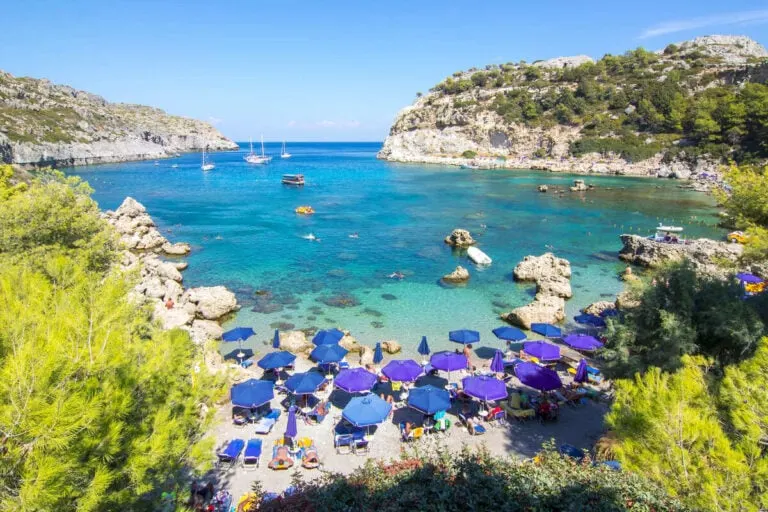Boasting world-famous historical landmarks, with the Parthenon and the Oracle at Delphi to name a couple, a breathtaking rugged nature, and being the proud cradle of Western civilization, Greece is one of the most popular sunny destinations in Europe.
Last year, it hosted over 32 million tourists, and according to travel agency TUI, it looks set to surpass that feat in a historic 2024 (based solely on the latest booking trends), but where are tourists headed, after all, and which destinations are seeing the biggest increase in reservations?
To TUI officials, it’s these 3 gorgeous islands that will steal the spotlight in the upcoming summer, and we’re sorry to break it to you, but don’t expect to find Mykonos or Santorini featured here:
Crete

The largest of the Greek islands, and one of the largest islands in the Mediterranean at that, Crete exists in a microcosm of its own, with its distinct Cretan culture, comospolitan atmosphere, in stark contrast with the smaller, laid-back Aegean islands, and abundant nature.
It is home to Heraklion, a bustling capital combining ancient heritage and coastal views, Elafonisi islet, where sands are an unbelievable bubblegum-pink, the colorful port city of Chania and the nearby White Mountains, the breathtaking Samaria Gorge, and countless picturesque hilltop villages.

As you can see, Crete is a stand-alone destination: do not try to couple it with other islands as there’s plenty of attractions to keep you busy for at least a couple of weeks, and even then, you still risk feeling as if you’ve barely scraped the surface.
Lucky for slow adventurers, landmark-packed Crete is one of the most affordable island getaways in Greece, with a two-week trip including food, accommodation, tourist attraction and transportation costing a very reasonable $1,542, against Santorini’s $2,655.
Rhodes

Tucked away in the Eastern Mediterranean, a stone’s throw from Turkish shores, Rhodes is Greece’s medieval Dodecanese jewel.
It is best represented by a heavily fortified walled town that would make Croatia’s world-famous Dubrovnik blush.
Rhodes (the city) is a designated UNESCO World Heritage with a perfectly-preserved medieval core, one of the most beautiful in the whole of Europe, and it’s been famous since times immemorial for its now-demolished Colossus, one of the Seven Wonders of the (Ancient) World.

The wider island itself is littered with ancient monuments, most notably Lindos Acropolis, where solitary Hellenic temples are perched on a mountain overlooking the azure Med, as well as sites of outstanding natural beauty: we’re talking golden-sand beaches, turquoise lagoons and hidden waterfalls.
In terms of affordability, Rhodes is on the pricier end of the 227 Greek islands, though not as much as the whitewashed, powerhouse Aegean duo – a.k.a. Santorini and Mykonos – with a one-week stay here setting you back by roughly $1,025.
Kos

It’s not a Greek island if there’s no teal-colored waters, cobbled Old Towns bedecked with the traditional ‘evil eye’ amulets and overhanging bougainvillea, and of course, some good old windmills, and we’re glad to say island number three ticks all of those boxes.
Like Rhodes, Kos is part of the Dodecanese, and it’s equally rich in natural and manmade wonders, from the lively Kos Town, dominated by an imposing 15th-century castle and Ancient Agora, to the pebble-and-sand, resort-dotted Limnionas Beach out west.

With its swim-friendly beaches bounded by calm waters and casual atmosphere, Kos is perfect for a relaxing summer vacay, and if you’re looking to spice up your trip (literally), you can even take a ferry to fellow resort hotspot Bodrum in Turkiye – it’s only 20 minutes with the boat, after all.
Kos is also remarkably cheap (by Greek island standards), as travelers pay on average $43 on meals per day, while hotel overnights range between $57 for a non-luxurious stay and $274 for five-star experiences, and total weekly expenses per person cap at $1,015 (the cheapest out of the three).
Credit: Source link

